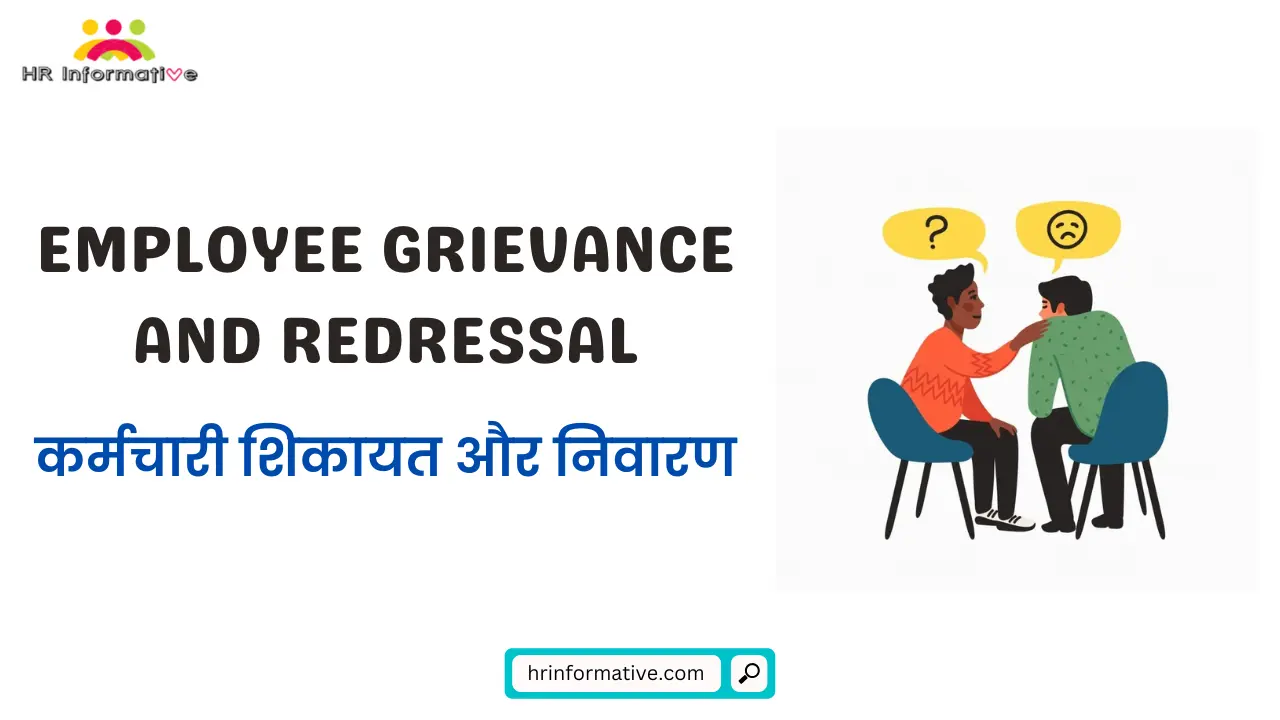In any organization, it is essential to maintain a harmonious work environment where employees feel heard, valued, and respected. However, conflicts and grievances may arise from time to time, which can negatively impact employee morale and productivity. To address such concerns, an effective employee grievance and redressal system is crucial. In this comprehensive article, we will delve into the various aspects of employee grievance and redressal, including its importance, key components, and best practices for implementation.
Understanding Employee Grievance
When an employee has a complaint or feels aggrieved about a workplace issue, it is known as an employee grievance. These grievances can arise from various factors, such as unfair treatment, harassment, discrimination, inadequate compensation, lack of growth opportunities, or problems with supervisors or colleagues. Grievances can significantly affect an employee’s job satisfaction, motivation, and overall well-being. Therefore, it is crucial for organizations to establish a robust mechanism for redressing these concerns promptly and effectively.
Importance of Employee Grievance Redressal
Creating an effective employee grievance redressal system is not only important for the individual employees but also for the overall health and success of the organization. Here’s why:
Enhanced Employee Satisfaction
An efficient grievance redressal system demonstrates that the organization values its employees’ opinions and concerns. When employees feel heard and supported, their job satisfaction increases, leading to higher productivity and retention rates.
Conflict Resolution
Grievances left unaddressed can escalate into larger conflicts within the workplace, negatively impacting the work environment. A well-structured redressal system helps in identifying and resolving issues at an early stage, preventing further escalation.
Retention and Employee Engagement
A fair and transparent grievance redressal process creates a positive work culture, fostering loyalty and commitment among employees. This, in turn, reduces turnover rates and boosts employee engagement.
Legal Compliance
In many jurisdictions, employers are legally obligated to provide a mechanism for employees to raise grievances and resolve conflicts. Implementing an effective grievance redressal system ensures compliance with employment laws, safeguarding the organization against potential legal risks.
Components of an Effective Employee Grievance Redressal System
To establish a robust employee grievance redressal system, several key components should be in place:
Clear Policy and Procedure
The organization should develop a comprehensive policy outlining the grievance redressal process. This policy should be easily accessible to all employees, clearly explaining the steps involved in raising a grievance, the timeline for resolution, and the channels available for escalation.
Multiple Channels of Communication
Providing employees with various channels to express their grievances ensures accessibility and caters to individual preferences. These channels can include direct communication with supervisors, designated grievance officers, suggestion boxes, anonymous complaint portals, or even external mediators.
Provide a Fair Hearing
Provide the employee with an opportunity to present their grievance and concerns in a fair and unbiased manner. Ensure that the employee feels heard and understood during the grievance resolution process. Allow them to bring a representative if desired.
Confidentiality and Anonymity
Confidentiality is vital in encouraging employees to come forward with their concerns without fear of retaliation. Offering the option of anonymous reporting can further encourage employees to share their grievances openly, leading to more effective resolutions.
Prompt Investigation
Once a grievance is raised, it is crucial to conduct a prompt and impartial investigation. This involves gathering relevant evidence, interviewing involved parties, and maintaining transparent communication throughout the process. Timely investigation helps prevent the escalation of conflicts and ensures a swift resolution.
Mediation and Alternative Dispute Resolution
In certain cases, mediation or alternative dispute resolution techniques can be employed to resolve grievances amicably. Trained mediators can facilitate open dialogue between the parties involved, helping them reach a mutually acceptable solution.
Documentation
Maintain detailed records of all grievances-related communications, investigations, and resolutions. This documentation can serve as a reference for future improvements and can be crucial in legal compliance.
Continuous Improvement
Regularly evaluate the effectiveness of the grievance redressal mechanism through feedback surveys, employee satisfaction assessments, and exit interviews. Incorporate the feedback to identify areas for improvement and make necessary adjustments.
Best Practices for Implementing an Employee Grievance Redressal System
To optimize the effectiveness of an employee grievance redressal system, organizations should consider the following best practices:
Awareness and Training
Regularly communicate the grievance redressal policy and procedure to all employees through orientation programs, training sessions, and internal communications. This ensures that employees are aware of their rights and the available mechanisms for addressing their concerns.
Empathy and Fairness
Foster a culture of empathy, fairness, and respect within the organization. Encourage open dialogue, active listening, and prompt action in response to grievances. Employees should feel confident that their concerns will be addressed impartially and justly.
Continuous Improvement
Regularly review and evaluate the effectiveness of the grievance redressal system. Analyze trends and patterns to identify systemic issues and implement necessary changes. Solicit feedback from employees to understand their satisfaction levels and make improvements accordingly.
Managerial Training
Train managers and supervisors on conflict resolution, effective communication, and leadership skills. Equipping them with the necessary tools to handle grievances sensitively and professionally will contribute to a more positive work environment.
Conclusion
Establishing an effective employee grievance and redressal system is crucial for maintaining a harmonious and productive workplace. By promptly addressing employee concerns, organizations can boost job satisfaction, enhance employee engagement, and mitigate potential conflicts. Through clear policies, multiple communication channels, confidentiality, prompt investigation, and continuous improvement, organizations can ensure a fair and supportive work environment for their employees. By prioritizing the resolution of grievances, organizations can foster a culture of trust, respect, and collaboration, ultimately leading to the long-term success of both employees and the organization as a whole.
Frequently Asked Questions (FAQs)
Q: What is an employee grievance?
Ans: An employee grievance refers to a complaint or concern raised by an employee regarding any aspect of their employment, including but not limited to unfair treatment, harassment, discrimination, inadequate compensation, lack of growth opportunities, or issues with supervisors or colleagues.
Q: Why is it important to address employee grievances?
Ans: Addressing employee grievances is crucial for maintaining a positive work environment. When grievances are left unresolved, they can lead to decreased job satisfaction, lower productivity, increased turnover rates, and even legal implications. Resolving grievances promptly and fairly helps foster a harmonious workplace and boosts employee morale and engagement.
Q: How can employees raise a grievance?
Ans: Employees can typically raise grievances through established channels within the organization. This may include directly approaching their supervisors or managers, contacting designated grievance officers, utilizing suggestion boxes or anonymous complaint portals, or following the procedures outlined in the organization’s grievance redressal policy.
Q: How can organizations ensure fairness in the grievance redressal process?
Ans: To ensure fairness, organizations should establish a culture of empathy, respect, and impartiality. This includes providing proper training to managers and supervisors on conflict resolution, effective communication, and leadership skills. Additionally, regular evaluations and feedback from employees can help identify areas for improvement and address any systemic issues.
You May Read Also :



